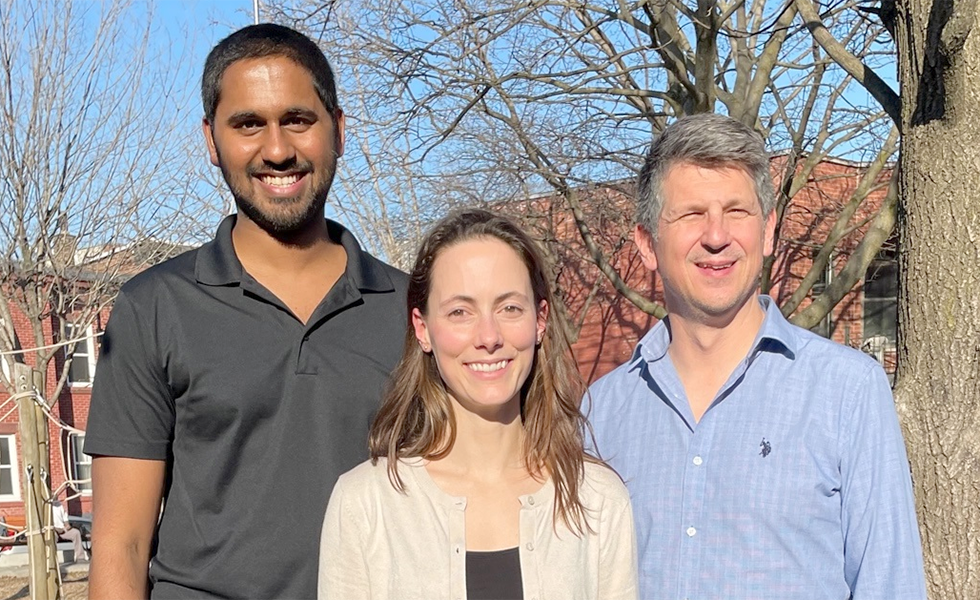
From left to right : Ajay David, Caroline Boudreau-Pinsonneault and Michel Cayouette.
Promissing work by the team of Dr. Michel Cayouette, Director of the Cellular Neurobiology Research Unit at the Montreal Clinical Research Institute (IRCM) and Full Professor at the Faculty of Medicine of the Université de Montréal, was recently published in the journal Proceedings of the National Academy of Sciences USA (PNAS).
The study brings new hope for the potential restoration of vision in patients suffering from degenerative retinal disease. The research team has discovered that it is possible to induce cells that lie dormant in the retina (glial cells) to transform them into cells sharing some properties with cone photoreceptors that allow us to perceive colors, read and drive.
In details
Inherited retinal degenerations are diseases caused by the loss of light-sensitive cells in the retina at the back of the eye. Unfortunately, when these cells degenerate due to disease, they are not replaced and the patient suffers vision loss that can progress to total blindness, a devastating diagnosis.
Although there are currently various approaches, such as gene therapy, that offer hope of slowing or blocking the progression of photoreceptor cell loss, these techniques cannot restore lost cells. They are thus of no use for patients already at the advanced stages of the disease.
There is therefore an urgent need to develop regenerative therapies that could replace the lost cells and restore vision. The use of stem cells to generate photoreceptors that could then be transplanted into the patient's eye is a promising research avenue, but this technology is currently facing major challenges that are slowing its translation into clinical treatments.
In an approach that circumvents the need for transplantation, Dr. Cayouette's team has found a way to reactivate dormant cells in the retina and transform them into neural-like cells that could ultimately be used to replace cells lost in retinal degeneration.
‘’We have identified two genes that, when expressed in these dormant cells called Müller cells, can convert them into retinal neurons. What's interesting is that these Müller cells are known to reactivate and regenerate the retina in fish, but these cells in mammals (including humans) do not normally reactivate in the event of injury or disease to regenerate the retina, and we don't yet fully understand why," explains Camille Boudreau-Pinsonneault, first author of the study who recently obtained her doctoral degree for this work at the IRCM.
‘’This is an exciting advance over cell transplantation because we may one day be able to take advantage of the cells that are normally present in the retina and stimulate them to regenerate retinal cells lost to pathological conditions and restore vision!" said Ajay David, a doctoral student in Dr. Cayouette's unit at IRCM and co-author of the study.
Based on this success, the scientists now plan to perfect the effectiveness of this technique and find a way to promote full maturation into cone photoreceptors that could restore vision.
Thanks to
This work was made possible through the valuable support of the Canadian Institutes of Health Research, Fighting Blindness Canada, the Krembil Foundation and Brain Canada.




